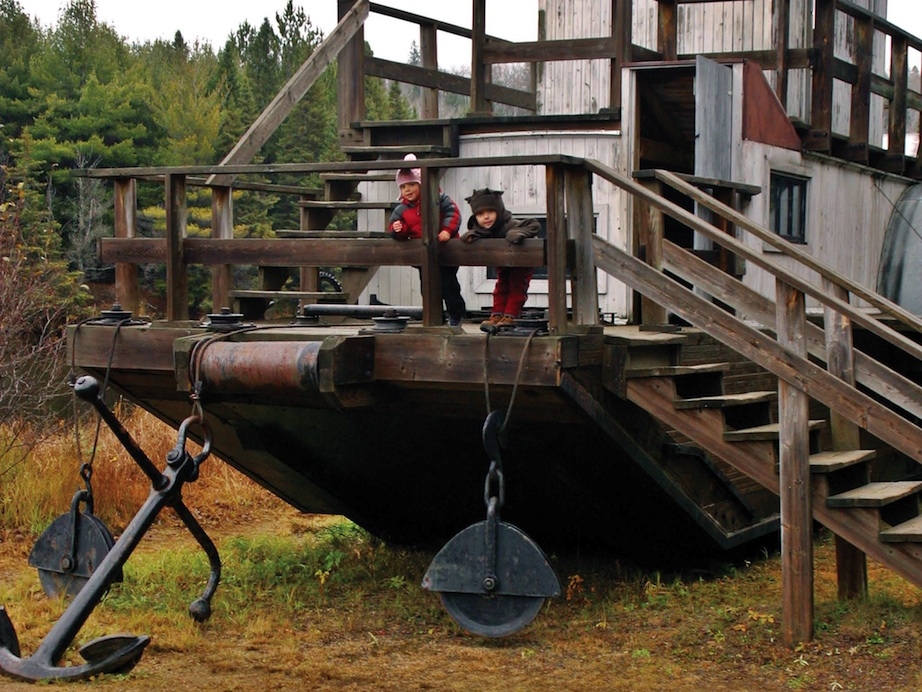The amphibious tugboat pictured here was invented in 1889. Called an “alligator,” it is a wood-fed paddlewheel steamer capable of warping 60,000 boom logs in a day, then winching itself on a temporary railway of logs overland to the next lake. Built in 1905 and taken out of service in 1946, the William M. is one of only three alligators remaining in existence. For the last 49 years, it has rested on the shore of a small creek 600 metres down a wheelchair accessible, stone dust path at the Algonquin Logging Museum.
Located on Highway 60 just inside Algonquin Park’s east gate, the Logging Museum has a bookstore, theatre and souvenir shop, but it’s outside—in the bush, above a log chute, behind the wheel of the William M. and aboard a locomotive—where Algonquin’s logging history really comes alive. The Logging Museum, like hundreds of others across the country, didn’t make this issue’s list of North America’s top six interpretive centres. Nevertheless, it is outdoors, interesting for kids and within an hour’s drive of my house, putting it at the top of my family’s favorites list.
By comparison, a 10-minute drive deeper into Algonquin Park is the Visitors Centre—a state-of-the-art interpretive facility opened in 1993 and heralded as a must-visit on any trip through the park. We do visit. However, all of the exhibits are indoors—like a museum, complete with a cafeteria. My four-year-old son refers to the Visitors Centre as, “you know Dad, that place where we eat pie.”
Stuffed wolves hide safely behind Plexiglas well protected from curious little fingers. The French lumberjack’s story of the log drive is interesting to small children for all of 10 seconds. After an hour inside the Visitors Centre, both kids and parents go crazy like moose with brainworm (see the exhibit if you have time). Quick kids, back outside to the wheelhouse of the William M.
In a hurried, blackberry-driven, concrete world so focused on higher marks and organized sports, it’s alluring to blow into these visitor centres for a canned, one-hour educational tour. However, study after study from education and health organizations like the American Academy of Pediatrics says free and unstructured child-centred play is healthy and even essential to the development of children. Free play is even more beneficial when it’s outdoors in nature. This means that if we want our children to learn more, be more active and be socially and emotionally well balanced, we need to turn off our ringers, get them outside and let their imaginations lead the way.
Dan Strickland, author of the Logging Museum’s interpretive guidebook, writes that the twice-rebuilt alligator will never again belch out smoke and sparks as it struggles across Algonquin’s lakes. Perhaps, but in the imaginations of my children, the log drive has just begun and there are plenty of trees to be floated downstream. “Stoke up that fire Katie, we need more steam.”
—Scott MacGregor
This article appeared in Canoeroots & Family Camping, Early Summer 2009. Download our free iPad/iPhone/iPod Touch App or Android App or read it here.
